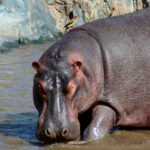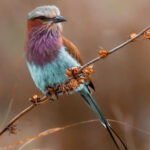NGORONGORO CRATER
Ngorongoro Crater is an East African natural wonder located in Tanzania. It is a vast volcanic caldera that developed when a giant volcano fell in on itself two to three million years ago. The floor of the crater is around 260 square kilometers (100 square miles) in size and is home to a rich ecosystem that supports a diverse assortment of fauna.
Ngorongoro Crater is famous for its breathtaking natural beauty and diverse fauna. It is sometimes referred to as the “eighth wonder of the world” due to its breathtaking vistas and abundance of species. The sides of the crater soar up to 600 meters (2,000 feet) above the bottom, providing a spectacular background for the fauna below.
The crater is a protected area that is part of the broader Ngorongoro Conservation Area, which also covers the surrounding hills and plains. An estimated 25,000 large mammals live in the area, including the “Big Five” (elephant, lion, leopard, buffalo, and rhinoceros). Other animals found in the crater include wildebeest, zebra, hyenas, cheetahs, hippos, and different antelope species.

Ngorongoro Crater draws a large number of tourists and environment lovers who come to see the spectacular wildlife and breathtaking scenery. Visitors can go on game drives to see the animals up close, take guided hikes, and interact culturally with the Maasai, who have lived in the area for years.
Since 1979, the Ngorongoro Conservation Area has been designated as a UNESCO World legacy Site for its ecological value and cultural legacy. It is a prime example of human-animal cohabitation, as the Maasai people continue to live and graze their livestock in the area alongside the wildlife.

Overall, the Ngorongoro Crater is an incredible destination that provides a one-of-a-kind and unforgettable safari experience, highlighting nature’s beauties and the delicate balance of life in one of Africa’s most stunning environments.


